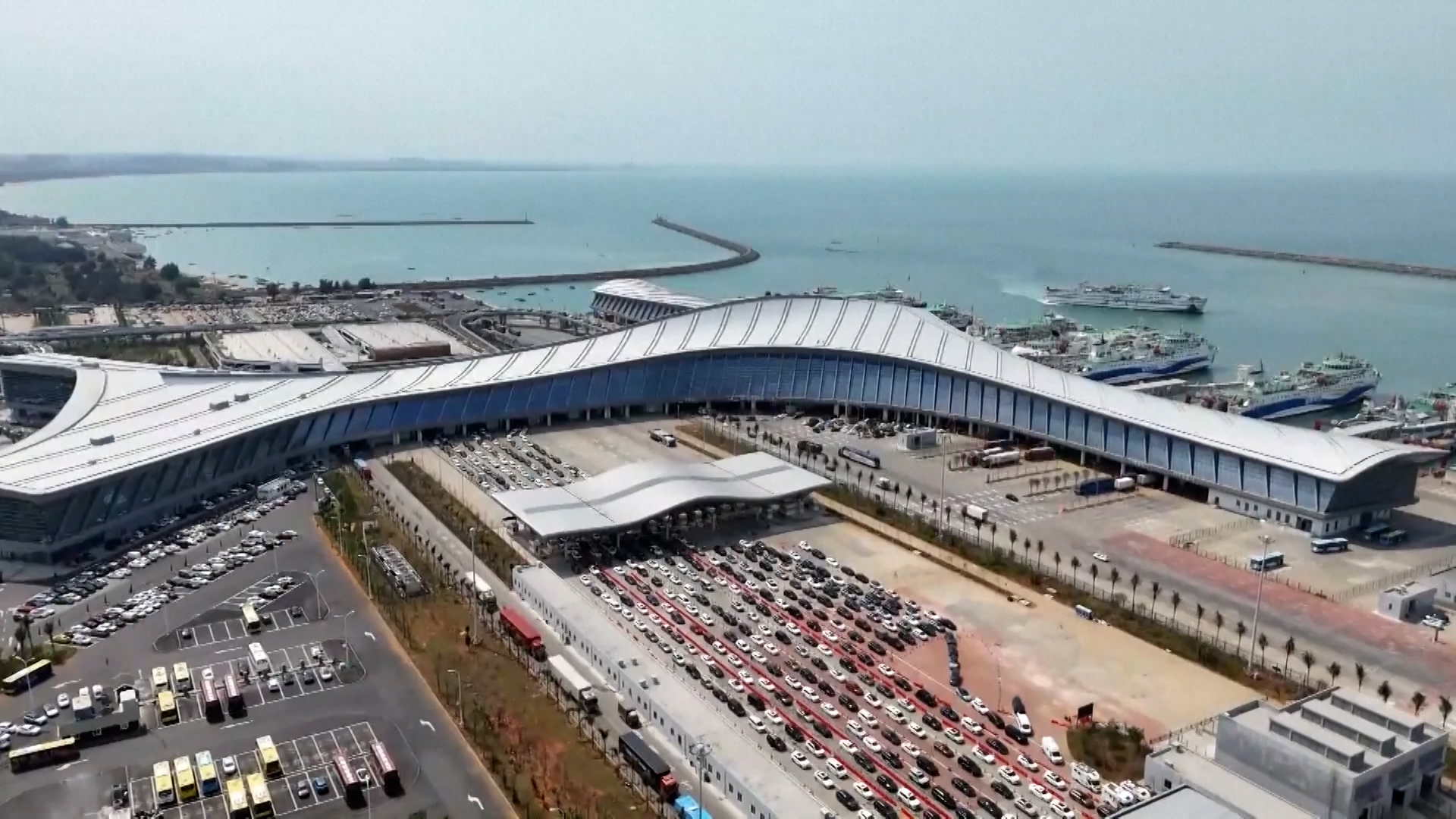President Xi Meets Multiple Leaders; China's 80th Anniversary of War Against Japan; Assassination of Former Ukrainian Official; SCO Summit Insights; China's Tech Market Shifts
Geopolitical Alliances and Strategic Partnerships: A Comparative Analysis
Recent events highlight the strengthening of China's strategic partnerships with several nations, as covered by multiple publications. Chinese President Xi Jinping's meetings with leaders from Armenia, Azerbaijan, and Russia, among others, at the Shanghai Cooperation Organization (SCO) summit in Tianjin, illustrate China's growing diplomatic engagements. The Chinese Foreign Ministry reported on Xi's meeting with the Armenian Prime Minister, emphasizing the establishment of a strategic partnership, underscoring mutual respect, and the intent to deepen cooperation across various sectors.
Similarly, another report from the same source detailed China's strategic alliance with Azerbaijan, highlighting the commitment to high-quality Belt and Road cooperation and mutual support in international affairs.
Moreover, CCTV echoed these sentiments, focusing on the partnership's potential to bring new opportunities and vitality to bilateral relations with Armenia. This narrative aligns with China's broader foreign policy strategy of forming alliances that emphasize economic and cultural exchanges.
In contrast, Liberty Times offered a different perspective, discussing Russian President Putin's visit to China and the implications for a 'counter-Western axis.' The report suggested that Russia and China are reinforcing their ties to challenge Western dominance, a sentiment further explored in another article from the same publication. These articles allude to the geopolitical dynamics at play, indicating a shift towards a multipolar world order.
Furthermore, United Daily News discussed the pressures on Mexico's President in dealing with the U.S., illustrating the broader theme of countries navigating their alliances amid global power shifts. This article highlighted Mexico's economic dependence on the U.S., contrasting with China's strategic partnerships that aim to reduce such dependencies.
Lastly, Tencent reported on potential exploratory talks between China and the U.S., suggesting that while formal agreements remain elusive, both sides are testing the waters for future economic cooperation.
These developments indicate a complex interplay of diplomacy and strategy, where nations like China and Russia bolster their alliances to counterbalance Western influence, while countries like Mexico navigate the challenges of maintaining favorable ties with powerful neighbors such as the U.S. The varied narratives reflect each publication's focus, whether on strategic partnerships, geopolitical shifts, or economic dependencies.
Commemorating the Spirit of Resistance: A Unified Narrative Across Chinese Media
The commemoration of the 80th anniversary of China's victory in the War of Resistance Against Japan and the World Anti-Fascist War is a focal point in recent Chinese media coverage. Both Sina and CCTV emphasize the enduring spirit and cultural heritage of the Chinese people as exemplified by wartime relics and memorials. President Xi Jinping's remarks highlighting the unyielding spirit of the Chinese nation serve as a common thread in these narratives, underscoring the spirit's role in inspiring future endeavors.
The articles from Sina and CCTV further delve into the symbolism of national flags and memorial sites, portraying them as beacons of progress and direction. The vivid imagery of soldiers marching through Tiananmen Square underlines the continuity of national pride from past to present. These pieces also highlight Xi's visits to significant historical sites, reinforcing the narrative of the Communist Party's pivotal role in the resistance and victory.
Meanwhile, another CCTV report discusses the systemic development of war memorials across China, noting the extensive efforts to preserve and enhance these sites. This report reflects a broader intention to institutionalize the memory of the resistance as a vital part of national education, especially for the younger generations.
In synthesis, these articles collectively aim to foster a sense of unity and national pride by emphasizing the historical achievements of China's resistance efforts. The focus on memorials and President Xi's statements suggests a strategic narrative that seeks to solidify the Communist Party's legacy as the cornerstone of Chinese resilience and progress. Such coverage not only commemorates past victories but also aims to galvanize public support for future national endeavors.
The Assassination of Former Ukrainian Parliamentary Chairman and Its Geopolitical Echoes
The tragic assassination of Andriy Parubiy, a former high-ranking official in Ukraine, has captured the attention of global media, with varying narratives emerging from different sources. CCTV highlights the calculated nature of the attack, noting how Parubiy was shot multiple times by an assailant disguised as a delivery worker. The report emphasizes Ukrainian President Zelensky's commitment to a thorough investigation, underscoring the incident as a 'horrific assassination.'
Meanwhile, Sina echoes similar details but provides additional context regarding Parubiy's political significance, describing his role in Ukraine's political upheavals and hinting at potential geopolitical motivations behind the murder. The report references ongoing military tensions between Ukraine and Russia, suggesting a possible link to the broader conflict.
The second report from Sina reiterates the details of the assassination, focusing on the immediate aftermath and the Ukrainian authorities' efforts to capture the perpetrator. This piece reinforces the notion of a meticulously planned crime, possibly tied to external influences, though it stops short of making direct accusations.
Adding another angle, Liberty Times offers a more speculative take, pondering the involvement of Russian operatives. The report details the methodical approach of the gunman and the ongoing manhunt, capturing the tense atmosphere in Ukraine. It also mentions surveillance footage that might provide clues, reflecting a community on edge and a nation grappling with potential international ramifications.
These narratives collectively paint a complex picture of a politically charged assassination, with each outlet providing unique insights into the motivations and implications of the crime. CCTV and Sina focus on the internal investigation and geopolitical context, while Liberty Times delves into potential foreign involvement, highlighting the multifaceted nature of this unfolding story.
Divergent Narratives on U.S. Visa Refusal to Palestinian Officials
Recent events highlight the tension between the U.S. and the Palestinian Authority, as the U.S. government refused visas to Palestinian officials, including President Abbas, preventing their attendance at the upcoming UN General Assembly. CCTV reports that the Palestinian government is urging the U.S. to reverse this decision, arguing it exacerbates tensions and escalates the situation. The U.S. cited national security interests for its decision, which has been met with international criticism.
These developments indicate a strong reaction from the European Union. According to another CCTV article, EU foreign ministers unanimously encouraged the U.S. to reconsider its decision. The EU meeting in Copenhagen also debated the severe situation in the Gaza Strip and potential sanctions against Israel, although no consensus was reached on specific measures.
It appears that the refusal to issue visas is seen by some EU officials as a breach of international law and multilateral principles. As reported by CCTV, Belgium's Deputy Prime Minister expressed regret over the U.S. decision, highlighting the importance of multilateralism and international legal norms.
The news highlights differing international perspectives on the U.S. decision, with European countries advocating for diplomatic engagement and expressing discontent over the exclusion of Palestinian voices from international forums. The U.S. stance, based on security concerns, contrasts sharply with the EU's call for inclusivity and dialogue.
2025 Global Peace Index: Divergent Narratives on Safety and Conflict
The recently published 2025 Global Peace Index (GPI) report by the Institute for Economics and Peace reveals contrasting narratives on global safety and conflict. World Journal highlights Iceland's continued reign as the safest country for the 17th consecutive year, while Russia is noted as the most unsafe nation for the first time. The article underscores Europe's dominance in peace rankings, with Ireland, Austria, New Zealand, and Switzerland rounding out the top five. Asia's representation in the top tier is limited, with Singapore being the only Asian country in the top ten, maintaining its 6th position. Taiwan, however, has slipped two places to 40th, reflecting regional challenges. The report notes a general decline in global peace, with military confrontations reaching post-World War II highs.
Similarly, United Daily News also reports on the GPI findings, echoing Iceland's top position and Russia's new low. It emphasizes the global shift towards militarization in response to increased conflicts, with a notable three new armed conflicts emerging this year. The article provides a regional breakdown, highlighting Japan's improvement to 12th place, while South Korea drops slightly to 41st, just behind Taiwan. The report indicates a mixed global picture, with improvements in 74 countries but deteriorations in 87.
Both articles provide a comprehensive overview of the GPI findings, yet their emphasis differs. World Journal focuses on the stability of peaceful nations and the increasing militarization globally, suggesting a cautious outlook on future peace. United Daily News, on the other hand, provides a more detailed regional analysis, highlighting specific country movements and the implications of ongoing conflicts. These narratives illustrate the varied lenses through which media outlets interpret and communicate global peace trends.
Shanghai Cooperation Organization's Growing Influence: A Unified Perspective
The Shanghai Cooperation Organization (SCO), a regional alliance known for its expansive membership and cooperative spirit, has captured the attention of major Chinese media outlets. Both CCTV and Sina focus on the organization's commitment to the 'Shanghai Spirit' — a philosophy emphasizing mutual trust, cooperation, and coexistence. Recent developments show that the SCO has maintained this ethos over its 24-year history, underscoring its role as a formidable player in regional and global affairs.
Both articles highlight the upcoming Tianjin summit, where President Xi Jinping is expected to attend and engage in related activities. This event is framed as a significant moment for the SCO, reflecting its growing influence and the anticipation surrounding its outcomes. The news highlights the SCO's continued expansion and the increasing size of its 'circle of friends', indicating a broadening appeal and strategic relevance.
Interestingly, both sources mirror each other in their narrative, possibly indicating a unified state-driven message. The coverage from CCTV and Sina suggests an intention to bolster the SCO's image as a leading international cooperative organization, reflecting China's broader diplomatic goals. This consistent portrayal across platforms might aim to reinforce national pride and international confidence in the SCO's strategic direction.
Tianjin's Moment in the Global Spotlight: A Unified Narrative Across Media
Recent events show Tianjin stepping into the 'Synergy Time,' a concept capturing both local vibrancy and global engagement. According to CCTV, the city is embracing a period marked by international cooperation and dynamic local culture, symbolized by the phrase 'smoke and fire of the world.' This metaphor highlights Tianjin's role as a melting pot of global cultures and ideas.
Similarly, Sina echoes this narrative, emphasizing Tianjin's welcoming attitude and its readiness to host visitors from all directions. Both articles focus on the city's integration into the global community, suggesting a coordinated media effort to project Tianjin as a hub of international synergy.
These developments indicate a strategic media campaign to position Tianjin as a city of global importance, with both outlets using similar language and imagery to convey this message. It appears that the intention is to attract international attention and investment, casting Tianjin as an open and vibrant city ready to engage with the world.
Exploring the Shanghai Cooperation Organization's Upcoming Summit
The articles from Sina News and CCTV both delve into the theme of the Shanghai Cooperation Organization (SCO) as a 'shared home' for its member states. The pieces highlight the upcoming 2025 SCO summit scheduled from August 31 to September 1 in Tianjin. Both sources emphasize the unity and collaborative spirit encapsulated in sayings like '志合者,不以山海为远' (For those with shared aspirations, no distance is too great) and '人心之间,有路相通' (Between hearts, there is a path). These are used to underscore the deep connections and cooperative ethos among the member countries.
While the content is largely similar, reflecting a coordinated narrative perhaps intended to promote a harmonious image of the SCO, each publication brings its own slight nuances. Sina News focuses on the alignment of the SCO's spirit with traditional sayings from various countries, suggesting a blend of cultural unity. In contrast, CCTV highlights the direct experience of the summit, encouraging engagement by offering QR codes for further interaction, which may suggest an intention to foster greater public involvement and awareness of the event.
Overall, both articles aim to present the SCO as a powerful cooperative force, emphasizing the integration of diverse cultural values and the shared goals of its member states. The narrative is clear: the SCO is not just a geopolitical entity but a community united by shared aspirations and mutual support.
Market Dynamics and Strategic Adjustments in China's Tech Sector
Recent events highlight a notable shift in China's tech stock sector, as reported by qq.com (Tencent). The article discusses the 'cooling down' of tech giants, with many stocks experiencing volatility that has left investors feeling 'dizzy'. Despite a fourth consecutive week of rising A-shares, fluctuations have intensified, indicating a possible market correction.
The news highlights a divergence in market performance, with the 'Double Creation Index' demonstrating strength, suggesting a preference for stocks with tech attributes, high capacity, and significant market value. This week, several major tech stocks, such as Hanwuji, New Yisheng, and Shenghong Technology, have shown prominence in trading volumes, according to Wind data.
These developments indicate that while tech stocks have been a focus, other sectors like rare earths and financial technology also hold significant positions. The recent announcements of risk warnings and trading halts by several tech companies suggest a strategic 'cooling down', possibly to manage overheating in the tech bull market. This includes companies like Zhongxin Guoji and Dongxin Gufen.
It appears that the market is undergoing a structural adjustment. The article from Tencent suggests a strategic shift towards domestic computing power and AI, with small-cap stocks experiencing collective pullbacks. This reflects a broader trend of industrial recalibration, with some stocks in the mainboard market receiving capital support.
The news from Tencent subtly indicates that while tech stocks face adjustments, they are not to be entirely dismissed. Short-term views suggest a potential acceleration in the tech sector, particularly in computing and semiconductor areas, after a period of adjustment.
Overall, the narrative from Tencent seems to emphasize the resilience and strategic maneuvering within China's tech market amid global economic shifts. This perspective aligns with broader themes of technological innovation and market adaptability in the face of regulatory and economic changes.



